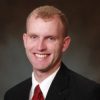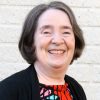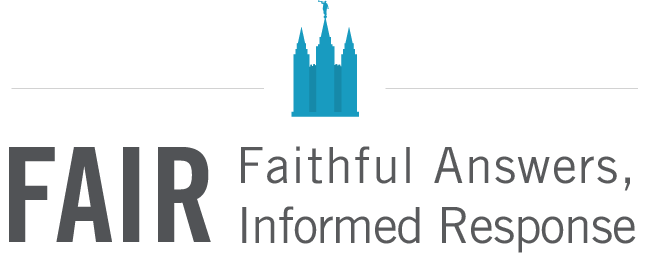Summary
2016 FAIR Conference Summary
The 18th annual FAIR Conference was held on August 4–5, 2016, at the Utah Valley Convention Center in Provo, Utah. This annual event brought together scholars, apologists, and interested individuals to discuss topics related to the defense of the gospel and the Church of Jesus Christ of Latter-day Saints. The conference aimed to provide information and answers to faithfully address criticisms leveled against the Church and the gospel.


Royal Skousen and Stan Carmack
Finishing up the Book of Mormon Critical Text Project: An Introduction to The History of the Text of the Book of Mormon
Abstract
In their 2016 FAIR Conference presentation, Royal Skousen and Stanford Carmack provided an overview of the concluding phases of the Book of Mormon Critical Text Project—a comprehensive scholarly endeavor aimed at reconstructing the original text of the Book of Mormon and tracing its textual history.
The project encompasses several volumes:
Volume I & II: Transcripts of the original and printer’s manuscripts.
Volume III: Titled The History of the Text of the Book of Mormon, this volume is being released in six parts over several years. The first two parts, Grammatical Variation, analyze the grammatical changes in the text over time. Subsequent parts will address topics such as the original language of the Book of Mormon, spelling variations, the transmission of the text through various editions, and the principles of textual criticism applied throughout the project.
Volume IV: Analysis of Textual Variants of the Book of Mormon, examining differences across various editions to determine the most accurate readings.
Skousen and Carmack highlighted that the primary changes in the Book of Mormon text over time have been grammatical in nature. They emphasized the importance of understanding these variations to appreciate the text’s development and to approach it with greater scholarly rigor.
The culmination of the project will include a computerized collation of all textual sources, enabling researchers to search for any variant and observe how the text has evolved throughout its history.
Bio
Royal Skousen is Professor of Linguistics and English Language at Brigham Young University and the editor of the Book of Mormon Critical Text Project (from 1988 to the present). In linguistics he is known for his theory of Analogical Modeling and the quantum computing implementation of it, called Quantum Analogical Modeling.
Stan Carmack is an independent linguistics scholar with a doctorate in Hispanic Languages and Literature from the University of California at Santa Barbara. He has a bachelor’s degree in linguistics from Stanford University as well as a law degree from the same institution. He currently researches topics on Book of Mormon language as it relates to earlier stages of English and serves as a collaborator with Royal Skousen on volume 3 of the critical text project.

Abstract
In his presentation, Morgan Deane examines the Gadianton Robbers as a case study of insurgency within the Book of Mormon. While previous analyses have likened these groups to secret societies or criminal organizations, Deane delves deeper into the socio-political dynamics that allowed such insurgencies to thrive. He identifies several contributing factors:
Political Weakness: The Nephite government’s declining ability to enforce laws and maintain territorial integrity created a power vacuum that insurgent groups exploited.
Unintended Consequences: Certain Nephite policies inadvertently fueled dissent, leading to the rise of groups like the Gadianton Robbers.
Ideological Appeal: The insurgents propagated a compelling ideology that resonated with segments of the population, further undermining central authority.
Deane also discusses the nuanced use of terms like “robber” and “thief” in the text, suggesting that these labels reflect deeper ethnic and class distinctions within Nephite society. By drawing parallels with historical insurgencies and employing a multidisciplinary approach, Deane provides a comprehensive understanding of the factors that contribute to the rise and persistence of insurgent movements in ancient contexts.
Bio
Morgan Deane is a military historian and freelance author. He has degrees in history from Southern Virginia University and Norwich University. His publications include Bleached Bones and Wicked Serpents: Ancient Warfare in the Book of Mormon, and the forthcoming, Reassessing the Book of Mormon. He taught history at Brigham Young University-Idaho and has been accepted into the War Studies PhD Program at Kings College London studying the early insurgency of Mao Zedong. He and his daughter live in Las Vegas.

Abstract
In his presentation, Matthew J. Grow offers an in-depth exploration of the Council of Fifty, a confidential organization established by Joseph Smith in March 1844. The council aimed to plan for the governance of a theocratic “Kingdom of God” on earth, addressing both spiritual and temporal matters during a period of significant turmoil for the Latter-day Saints.
Grow discusses the historical context and significance of the council’s minutes, which were meticulously recorded by William Clayton and remained largely inaccessible for over a century. These records provide valuable insights into the early Church’s efforts to navigate issues of governance, religious freedom, and societal organization.
The presentation highlights the council’s endeavors to draft a constitution reflecting the principles of theodemocracy—a system combining divine guidance with democratic processes. Notably, Joseph Smith emphasized that the council’s authority was distinct from ecclesiastical leadership, focusing instead on protecting the rights and freedoms of all individuals, regardless of religious affiliation.
Grow also addresses the council’s role in exploring potential settlements for the Saints, including considerations of locations in Texas, Oregon, and California. These discussions underscore the council’s practical functions in addition to its theological aspirations.
By examining the newly published minutes, Grow sheds light on the complexities of early Church leadership and the interplay between religious conviction and political strategy. The release of these documents marks a significant milestone in Latter-day Saint historiography, offering a more nuanced understanding of the Church’s formative years.
Bio
Matthew J. Grow is Director of Publications at the Church History Department of The Church of Jesus Christ of Latter-day Saints and a general editor of the Joseph Smith Papers. He leads a team of forty historians, editors, and web specialists creating historical publications for academic and popular audiences. His newest book, which is part of the Joseph Smith Papers, is Council of Fifty Minutes, March 1844-January 1846 (co-editors Ronald Esplin, Mark Ashurst-McGee, Gerrit Dirkmaat, and Jeffrey Mahas; Church Historian’s Press), due out in September 2016. He is also a co-author of The First Fifty Years of Relief Society: Key Documents in Latter-day Saint Women’s History (co-authors Jill Derr, Carol Madsen and Kate Holbrook; Church Historian’s Press, 2016). In 2015, he authored The Prophet and the Reformer: The Letters of Brigham Young and Thomas L. Kane (co-author Ronald W. Walker, Oxford University Press). Previous books including award-winning biographies of Parley P. Pratt (with Terryl Givens) and Thomas L. Kane. He received his PhD in American history from the University of Notre Dame in 2006.

Abstract
In his presentation, Matthew Roper examines the descriptions of swords and cimeters in the Book of Mormon, comparing them with archaeological and historical evidence from both the ancient Near East and Pre-Columbian Mesoamerica. He begins by addressing the mention of steel swords in the Book of Mormon, such as the sword of Laban, and notes that archaeological discoveries, like a meter-long steel sword near Jericho dating to the time of King Josiah, support the plausibility of such weapons existing during that period.
Roper then explores the types of weapons used in ancient Mesoamerica, acknowledging that no metal swords from Pre-Columbian times have been found. He suggests that the term “sword” in the Book of Mormon may refer to weapons like the macuahuitl—a wooden sword embedded with obsidian blades—used by Mesoamerican civilizations. These weapons were capable of inflicting severe injuries, aligning with the Book of Mormon’s descriptions of their lethality.
By analyzing linguistic, cultural, and archaeological contexts, Roper argues that the Book of Mormon’s accounts of weaponry are consistent with known historical practices and technologies. He emphasizes the importance of understanding the text within its ancient setting to appreciate its descriptions accurately.
Bio
Matthew Roper is Research Associate at the Neal A. Maxwell Institute for Religious Scholarship at Brigham Young University. He received a BA in history and an MA in sociology from BYU. Matt has had a long and abiding interest in the Book of Mormon and has published on issues such as warfare, Lehite social structure, interpretations of Book of Mormon geography, and other topics relating to the ancient pre-Columbian setting for the book. He also compiled and is responsible for the Harold B. Lee Library’s electronic collection 19th-Century Publications about the Book of Mormon (1829–1844). His current research and publication efforts focus on questions of Book of Mormon authorship, historical and contemporary interpretations, and the intellectual history of Latter-day Saint scripture. He is married to Julie (Kane). They live in Provo, Utah, and have five children.

Abstract
In her presentation, Wendy Ulrich explores the evolving understanding of priesthood within The Church of Jesus Christ of Latter-day Saints, particularly concerning women’s roles. She emphasizes that priesthood should not be viewed solely as a male-exclusive authority but as a divine power accessible to all covenant members. Ulrich discusses how women participate in priesthood power through temple ordinances, callings, and spiritual gifts. She advocates for teaching both daughters and sons about the inclusive nature of priesthood, encouraging a broader perspective that recognizes the spiritual authority and contributions of women in the Church.
Bio
Wendy Ulrich, PhD, is a psychologist and former president of the Association of Mormon Counselors and Psychotherapists, and has been a visiting professor at Brigham Young University. She has authored numerous articles and books, including Weakness is Not Sin, The Temple Experience, and Let God Love You. She is the founder of Sixteen Stones Center for Growth, offering seminar-retreats for LDS women and their loved ones (sixteenstones.net). She and her husband Dave Ulrich have three children and eight grandchildren.

Abstract
In her presentation, Jill Mulvay Derr explores the pivotal role of Eliza R. Snow in the 1868 reorganization of the Relief Society within The Church of Jesus Christ of Latter-day Saints. Initially established in Nauvoo in 1842 under Joseph Smith’s direction, the Relief Society had become inactive following internal conflicts and Brigham Young’s suspension of its meetings in 1845. Recognizing the need for a structured women’s organization to assist with the Church’s expanding responsibilities, Brigham Young called for the reestablishment of Relief Societies in December 1867.
Eliza R. Snow was instrumental in this revitalization. Drawing upon her experience as the original secretary of the Nauvoo Relief Society and her preservation of its minute book, she traveled extensively to organize local Relief Societies across Utah Territory. Snow emphasized the importance of adhering to the original structure and procedures, ensuring consistency and legitimacy in the reestablished organizations. Her efforts not only reinstated the Relief Society but also reinforced its integral role within the Church’s ecclesiastical framework, highlighting the enduring significance of women’s contributions to Latter-day Saint religious life.
Bio
Jill Mulvay Derr has studied the history of Mormon women for more than four decades. In 1973 she joined the Historical Department of The Church of Jesus Christ of Latter-day Saints as a member of the History Division, directed by Church Historian Leonard J. Arrington. Her association with the Arrington team continued after 1980 when the group transferred to Brigham Young University and became the Joseph Fielding Smith Institute for Latter-day Saint History. Derr was Associate Professor of Church History at BYU and served as Managing Director of the Smith Institute from 2003 to 2005, when she rejoined the LDS Church History Department in Salt Lake City. Since her retirement in 2011, she has continued working with colleagues Carol Cornwall Madsen, Kate Holbrook, Matthew Grow, and many department volunteers to complete a longtime project, The First Fifty Years of Relief Society: Key Documents in Latter-day Saint Women’s History, recently published by the Church Historian’s Press. A past president of the Mormon History Association, Derr has published more than two dozen articles in scholarly books and journals and co-authored four books: Women’s Voices: An Untold History of the Latter-day Saints (1982), with Kenneth W. Godfrey and Audrey M. Godfrey; Women of Covenant (1992) with Janath Russell Cannon and Maureen Ursenbach Beecher; Eliza R. Snow: The Complete Poetry (2009) and Eliza: The Life and Faith of Eliza R. Snow (2013), with Karen Lynn Davidson. She and her husband, C. Brooklyn Derr are the parents of four children and ten grandchildren. They reside in Holladay, Utah.

Abstract
In her presentation, Ally Isom explores how engaging in open, faith-centered dialogues about differences can lead to personal and communal transformation. Using the metaphor of porcupines huddling for warmth yet pricking each other with their quills, she illustrates the challenges and necessities of coming together despite differences.
Isom emphasizes four core principles:
Words Matter: Language shapes our interactions and understanding; mindful word choice is crucial.
People Matter: Recognizing the inherent worth of individuals fosters empathy and respect.
You Matter: Each person’s voice and presence contribute meaningfully to the dialogue.
We Matter: Collective efforts and unity are essential for meaningful progress.
She shares personal anecdotes to highlight the impact of words and the importance of approaching conversations with humility and a willingness to listen. Isom posits that the process of engaging in such dialogues—marked by patience, compassion, and faith—can be more transformative than the outcomes themselves. By participating in these “faith-centered dialectics,” individuals can experience spiritual growth and contribute to a more understanding and united community.
Bio
A professional passionate about making a difference, Ally Isom is currently the director of the Division of Family and Community Relations in the Public Affairs Department of The Church of Jesus Christ of Latter-day Saints. Her portfolio includes local business, interfaith and community relationships, as well women’s, LGBT and race issues. She has also been a Church spokesperson. Ally previously served as Utah Governor Gary Herbert’s Deputy Chief of Staff, Communications Director and spokesperson, following several years in state agency leadership and extensive experience as a political and campaign consultant. Highlights from her community involvement include service as a Kaysville City Councilmember, the Utah Clean Air Partnership Board, and the Utah Heritage Council. She received her Bachelor of Arts from Brigham Young University, where true to resisted cliché, Ally—the freshman—met her husband, Eric—the returned missionary from Idaho—in Political Science 110. They have four children and one grandchild, and have built a life centered in covenant and commitment. Ally also enjoys reading, cooking, hiking and cultural events.


Abstract
In his presentation, Benjamin McGuire explores the translation of the Book of Mormon through the lens of speech act theory, emphasizing the importance of viewing translation as a communicative act rather than merely a mechanical process. He critiques the common focus on the physical aspects of the translation—such as the use of seer stones or the presence of a curtain—and instead encourages a deeper examination of the translation’s nature and purpose.
McGuire introduces the concepts of formal equivalence (word-for-word translation) and dynamic equivalence (thought-for-thought translation) to frame the discussion. He argues that understanding the Book of Mormon’s translation requires moving beyond surface-level observations to consider how meaning is conveyed and interpreted within its historical and cultural context. By applying speech act theory, McGuire provides a framework for analyzing the translation that accounts for the intentions of the original authors, the translator’s role, and the audience’s reception.
This approach offers a more nuanced perspective on the Book of Mormon, acknowledging the complexities of translation and communication. It encourages readers to consider not just the words on the page but the broader context in which those words were produced and received.
Bio
Benjamin L. McGuire is a technologist in the field of healthcare in northern Michigan, where he lives with his wife and three children. He has special interest in the field of literary theory and its application to the Book of Mormon and early LDS literature. He has previously published with the Maxwell Institute, and with Interpreter: A Journal of Mormon Scripture, and currently serves on the Interpreter Editorial Board.

Abstract
In her 2016 FAIR Conference presentation, Kathryn H. Shirts explores the evolving discourse surrounding women’s relationship to priesthood authority within The Church of Jesus Christ of Latter-day Saints. She examines the historical development of the “priesthood/motherhood” model, which traditionally positioned priesthood as a male domain and motherhood as its female counterpart. Shirts argues that this model, rooted in late 19th and early 20th-century thought, does not fully encapsulate the ways women actively serve and exercise authority in the Church today.
Drawing upon scriptural references and teachings from Church leaders, including Elder Dallin H. Oaks’ 2014 assertion that women can possess priesthood authority in their callings, Shirts advocates for a more inclusive understanding of priesthood. She emphasizes that through covenants and ordinances, such as baptism, women become “daughters of Christ,” entering into the order of the Son of God and participating in His work. By reexamining historical documents, like the Nauvoo Relief Society minutes, and embracing a broader theological framework, Shirts encourages the development of language that more accurately reflects women’s roles and spiritual authority within the Church.
Bio
Kathryn H. Shirts holds a BA from Stanford in history and an MTS from Harvard Divinity School in American Church History. She co-authored A Trial Furnace: Southern Utah’s Iron Mission, and she has given presentations at the BYU Women’s Conference, the Mormon History Association, and the Church History Symposium. She is married to Randall Shirts, and they have six children and five grandchildren.

Grant Hardy
More Effective Apologetics
Abstract
In his 2016 FAIR Conference address, “More Effective Apologetics,” Grant Hardy examines the evolving landscape of Latter-day Saint apologetics in response to contemporary challenges. Drawing from his experiences as a professor of history and religious studies at the University of North Carolina at Asheville, Hardy emphasizes the need for a more empathetic and nuanced approach to defending the faith.
Hardy identifies four key audiences for apologetic efforts: academics, non-Mormons, critics, and wavering members. He advocates for strategies that include being well-informed, using respectful language, listening actively, and adhering to the Golden Rule. Hardy cautions against combative rhetoric and encourages apologists to avoid overreaching claims, instead focusing on positive aspects of the faith and acknowledging complexities.
He also highlights the importance of addressing the concerns of those experiencing faith crises with patience and fairness, recognizing that many are seeking sincere answers rather than attempting to undermine the Church. By fostering open and honest dialogue, Hardy believes that apologetics can play a vital role in strengthening faith and making Mormonism more accessible and appealing to future generations.
Bio
Grant Hardy is Professor of History and Religious Studies at the University of North Carolina at Asheville. He has a B.A. in Ancient Greek from Brigham Young University and a Ph.D. in Chinese Language and Literature from Yale. He has authored Worlds of Bronze and Bamboo: Sima Qian’s Conquest of History; The Establishment of the Han Empire and Imperial China; and Understanding the Book of Mormon: A Reader’s Guide. He has also edited The Book of Mormon: A Reader’s Edition; Enduring Ties: Poems of Family Relationships; and the Oxford History of Historical Writing, Vol. 1. Hardy’s “Sacred Texts of the World,” a 36-lecture course for the Teaching Company, was released last year, and follows his earlier course “Great Minds of the Eastern Intellectual Tradition.” Grant and his wife Heather have two children.

Abstract
In his 2016 FAIR Conference address, Patrick Q. Mason discusses the challenges and opportunities facing Latter-day Saints in a secular age. He emphasizes the importance of embracing the distinctive doctrines and practices of Mormonism with confidence and authenticity. Mason argues that rather than seeking acceptance by conforming to mainstream religious norms, Latter-day Saints should boldly affirm their unique theological contributions, such as the expansive view of God and the potential for human divinity.
He addresses the issue of faith crises, noting that many members struggle with historical and doctrinal concerns. Mason advocates for open, honest, and compassionate conversations that acknowledge these difficulties while reaffirming the value and truth of the gospel. He calls for a community that supports individuals in their faith journeys, recognizing that doubt and questioning can be part of a healthy spiritual life.
Mason also highlights the need for the Church to confront past mistakes, such as issues related to race and gender, and to strive for greater inclusivity and understanding. He encourages members to engage with secular society not as adversaries but as contributors who offer a unique and valuable perspective. By living with the courage of their convictions, Latter-day Saints can provide meaningful insights and serve as a force for good in the world.
Bio
Patrick Q. Mason holds the Howard W. Hunter Chair in Mormon Studies at Claremont Graduate University, where he is also an associate professor of religion and chair of the Religion Department. After earning his BA in History from Brigham Young University, he attended the University of Notre Dame where he earned an MA in International Peace Studies and PhD in History. He is the author, editor, or co-editor of several books, including most recently Planted: Belief and Belonging in an Age of Doubt (Deseret Book and Neal A. Maxwell Institute), Out of Obscurity: Mormonism since 1945 (Oxford University Press), Directions for Mormon Studies in the Twenty-First Century (University of Utah Press), and later this fall an introductory college textbook called What Is Mormonism? (Routledge). A frequently sought-after expert on Mormonism and religion in American life, Mason has appeared in numerous media outlets including National Public Radio, the Today Show, New York Times, Los Angeles Times, Wall Street Journal, and the Huffington Post. He lives in Claremont, California, with his wife Melissa and their four children.

Ralph Hancock
“Love Wins,” and Charity Loses
Abstract
In his presentation, Ralph Hancock critically examines the popular slogan “Love Wins,” which gained prominence following the U.S. Supreme Court’s 2015 decision in Obergefell v. Hodges legalizing same-sex marriage. Hancock argues that while the phrase appears to champion inclusivity and compassion, it often reflects a superficial understanding of love that prioritizes sentiment over substantive moral commitments.
He contends that this modern interpretation of love tends to dismiss traditional moral frameworks, leading to a form of universalism that undermines the depth and demands of Christian charity. By conflating love with uncritical acceptance, society risks losing the transformative power of charity, which involves not only empathy but also a commitment to truth and moral discernment.
Hancock emphasizes the importance of distinguishing between genuine charity, rooted in Christian teachings, and the contemporary usage of “love” that may neglect the complexities of moral responsibility. He calls for a reevaluation of how love is understood and practiced, advocating for a return to a conception of charity that encompasses both compassion and a steadfast adherence to moral principles.
Bio
Ralph C. Hancock holds degrees from BYU and Harvard, and has taught political philosophy at Brigham Young University since 1987; he is also President of the John Adams Center for the Study of Faith, Philosophy and Public Affairs, an independent educational foundation (johnadamscenter.org). His most recent book is The Responsibility of Reason: Theory and Practice in a Liberal-Democratic Age (Rowman & Littlefield), and a new edition of his Calvin and the Foundations of Modern Politics has recently been published by Saint Augustine’s Press; he has also translated numerous works from French. His chapter, “Mormon Apologetics and Mormon Studies: Truth, Relativism and the New Mormon Love-In,” is forthcoming in Van Dyke & Ericson, eds., Perspectives on Mormon Theology: Apologetics. Dr. Hancock is also a contributing editor of the quarterly Perspectives on Political Science, an editor at the online scholarly journal SquareTwo.org, which addresses public affairs for members of The Church of Jesus Christ of Latter-day Saints, and a regular columnist for the Deseret News. Ralph and his wife, Julie, are parents of five and grandparents of thirteen.

Brian Stubbs
Changes in Languages from Nephi to Now
Abstract
In his 2016 FAIR Conference presentation, linguist Brian Stubbs explores the linguistic connections between ancient Near Eastern languages and the Uto-Aztecan language family, which encompasses approximately 30 related languages spoken across the western United States and Mexico. Stubbs proposes that elements of Hebrew, Aramaic, and Egyptian have influenced Uto-Aztecan languages, suggesting a historical link between these language groups.
Stubbs identifies over 1,500 cognate sets—groups of words with a common etymological origin—between Uto-Aztecan and Semitic/Egyptian languages. Specifically, he notes approximately 400 correspondences with Egyptian, 700 with Aramaic-Hebrew, and 400 with Phoenician. These findings are based on systematic sound changes and linguistic patterns that align with established methodologies in historical linguistics.
The presentation also addresses questions about the linguistic divergence between Nephite and Mulekite peoples described in the Book of Mormon. Stubbs suggests that differences in original languages, subsequent language contact, and natural linguistic evolution could account for the reported communication barriers.
While acknowledging that his theories are subject to ongoing scholarly review and debate, Stubbs emphasizes that the linguistic evidence provides a compelling case for Near Eastern influence on Uto-Aztecan languages, offering potential insights into the historical narratives of the Book of Mormon.
Bio
Brian Stubbs received his M.A. in linguistics under foremost specialists in Uto-Aztecan and a near PhD(ABD) in Semitic languages (Hebrew, Arabic, and Aramaic), which enabled him to publish the reference work Uto-Aztecan Comparative Vocabulary, lauded by linguists, followed by Exploring the Explanatory Power of Semitic and Egyptian in Uto-Aztecan. His latest book, Changes in Languages from Nephi to Now, explains the relevance of all such to the languages of Book of Mormon peoples. He and his wife Silvia have five children and thirteen grandchildren.

Abstract
In his concluding address at the 2016 FAIR Conference, Daniel C. Peterson explores the nature of belief and the challenges of constructing a cohesive alternative to the traditional narrative of the Book of Mormon’s origins. He argues that while individual elements of the Book of Mormon have been scrutinized and alternative explanations proposed, these often require complex, multifaceted theories that lack the simplicity and coherence of Joseph Smith’s account.
Peterson likens these convoluted explanations to a “Rube Goldberg” machine—overly complicated and less plausible than the straightforward narrative provided by the Church.
He emphasizes that belief is not compelled by irrefutable proof but is supported by a cumulative case that resonates with reason and spiritual conviction.
Ultimately, Peterson shares his personal journey of faith, highlighting that, despite critical examination, he finds the most logical and spiritually satisfying explanation in the authenticity of the Book of Mormon and the prophetic role of Joseph Smith.
Bio
A native of southern California, Daniel C. Peterson received a bachelor’s degree in Greek and philosophy from Brigham Young University (BYU) and, after several years of study in Jerusalem and Cairo, earned his Ph.D. in Near Eastern Languages and Cultures from the University of California at Los Angeles (UCLA). Dr. Peterson is a professor of Islamic Studies and Arabic at BYU, where he has taught Arabic language and literature at all levels, Islamic philosophy, Islamic culture and civilization, Islamic religion, the Qur’an, the introductory and senior “capstone” courses for Middle Eastern Studies majors, and various other occasional specialized classes. He is the author of several books and numerous articles on Islamic and Latter-day Saint topics–including a biography entitled Muhammad: Prophet of God (Eerdmans, 2007)—and has lectured across the United States, in Europe, Australia, and New Zealand, and at various Islamic universities in the Near East and Asia. He served in the Switzerland Zürich Mission (1972-1974), and, for approximately eight years, on the Gospel Doctrine writing committee for The Church of Jesus Christ of Latter-day Saints. He also presided for a time as the bishop of a singles ward adjacent to Utah Valley University. Dr. Peterson is married to the former Deborah Stephens, of Lakewood, Colorado, and they are the parents of three sons.

Speakers
Stanford Carmack, Morgan Deane, Jill Derr, Matthew J. Grow, Matt Roper, Wendy Ulrich, Ally Isom, Ben McGuire, Kathryn Shirts, Grant Hardy, Patrick Mason, Ralph Hancock, Brian Stubbs, Daniel C. Peterson.
Please note that this list is compiled from the information available and may not include all speakers from the conference.
Topics
Book of Mormon translation, Book of Mormon historicity, Book of Mormon linguistics, Book of Mormon warfare, Book of Mormon weapons, Book of Mormon textual criticism, Book of Mormon language and grammar, Book of Mormon and Mesoamerican studies, Relief Society history, Eliza R. Snow, women’s roles in the Church, priesthood and women, Council of Fifty, early LDS political theology, LDS Church governance, faith crisis, doubt and belief, secularism and religion, modern apologetics, effective apologetics strategies, language and dialogue in faith, charity vs. cultural narratives, linguistics and Semitic influence on Uto-Aztecan languages, LDS temple and priesthood theology, youth and priesthood, LDS gender theology, LDS responses to same-sex marriage culture.
John Taylor Award
Each year, FAIR awards the John Taylor Defender of the Faith Award to a volunteer who made meritorious contributions to FAIR’s mission and outstanding personal efforts in helping defend The Church of Jesus Christ of Latter-day Saints.
In 2016, the John Taylor Defender of the Faith Award recipient was Julianne Dehlin Hatton.
Julianne Dehlin Hatton
Julianne Dehlin Hatton is a broadcast journalist living in Louisville, Kentucky. She has worked as a News Director at an NPR affiliate, Radio and Television Host, and Airborne Traffic Reporter. She graduated with an MSSc from the Maxwell School of Citizenship and Public Affairs at Syracuse University in 2008. Julianne and her husband Thomas are the parents of four children.
